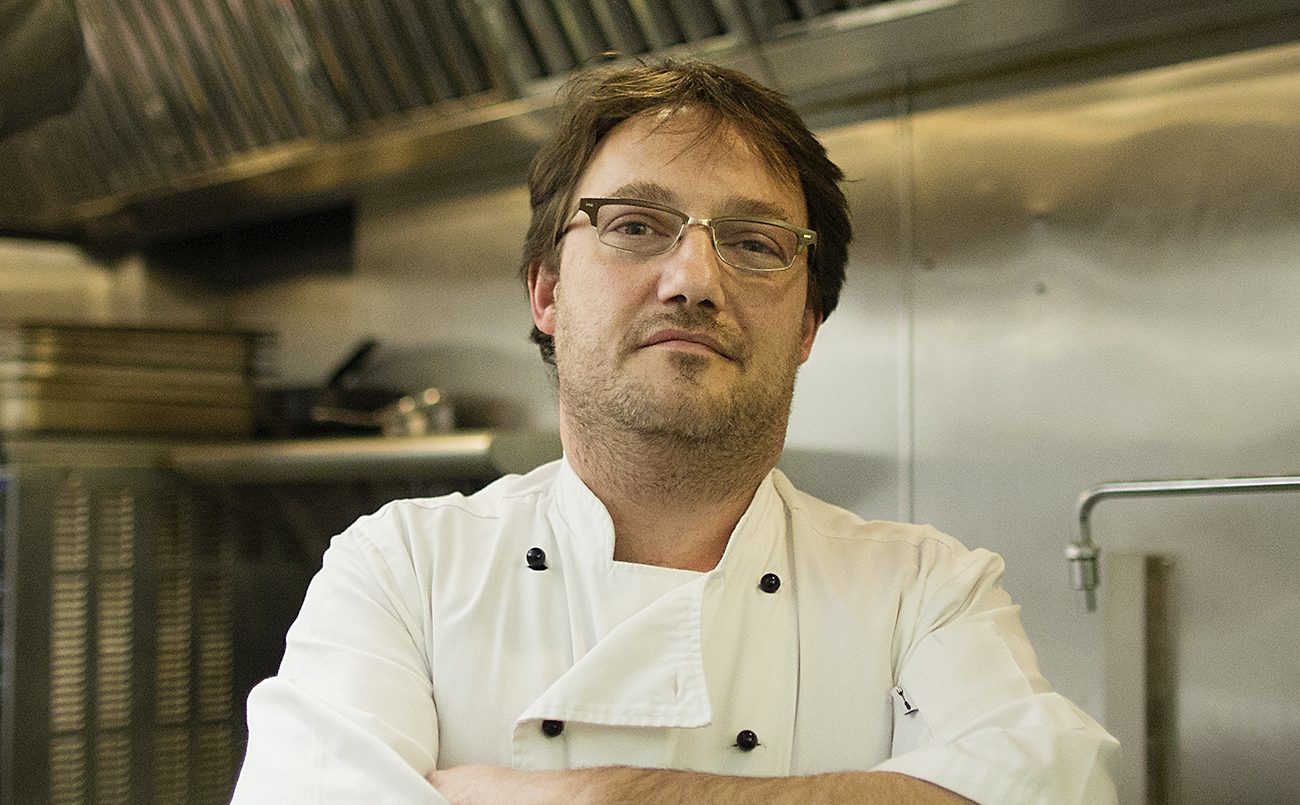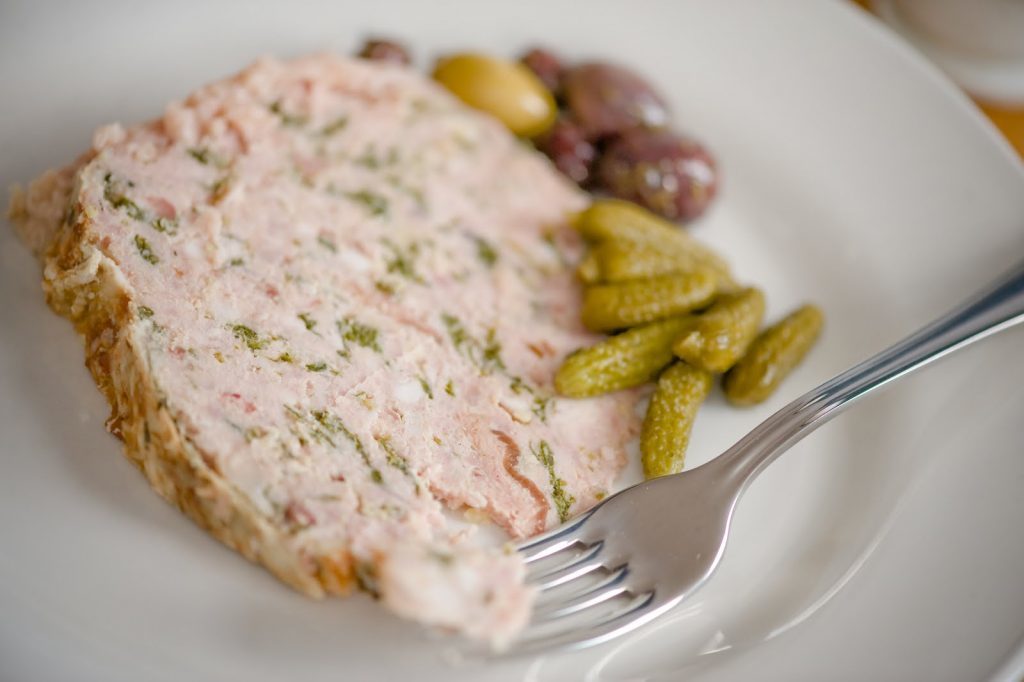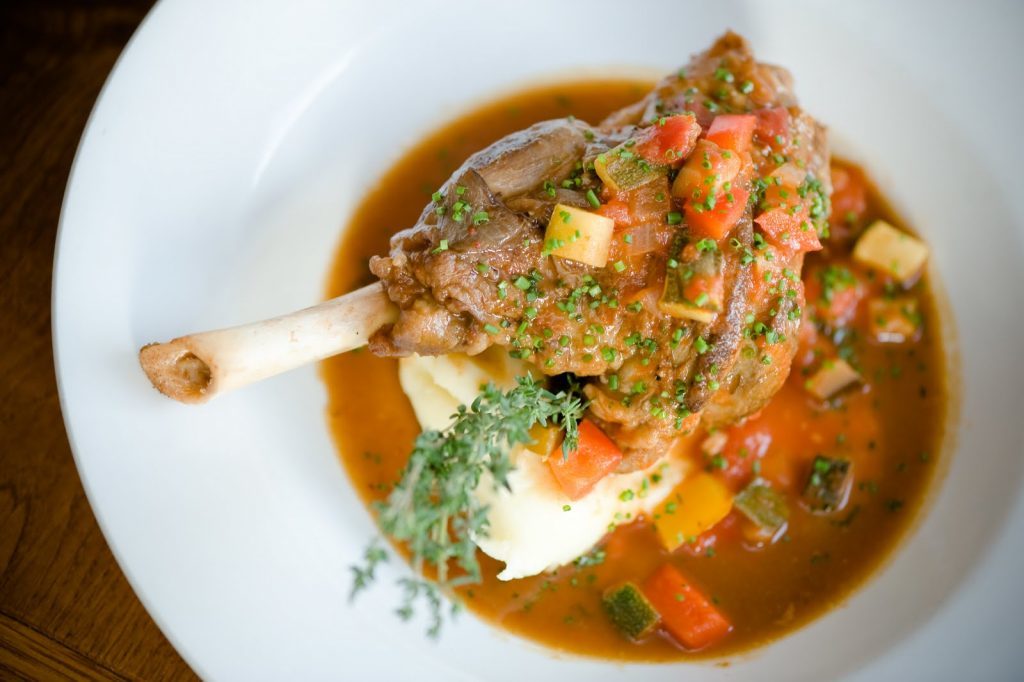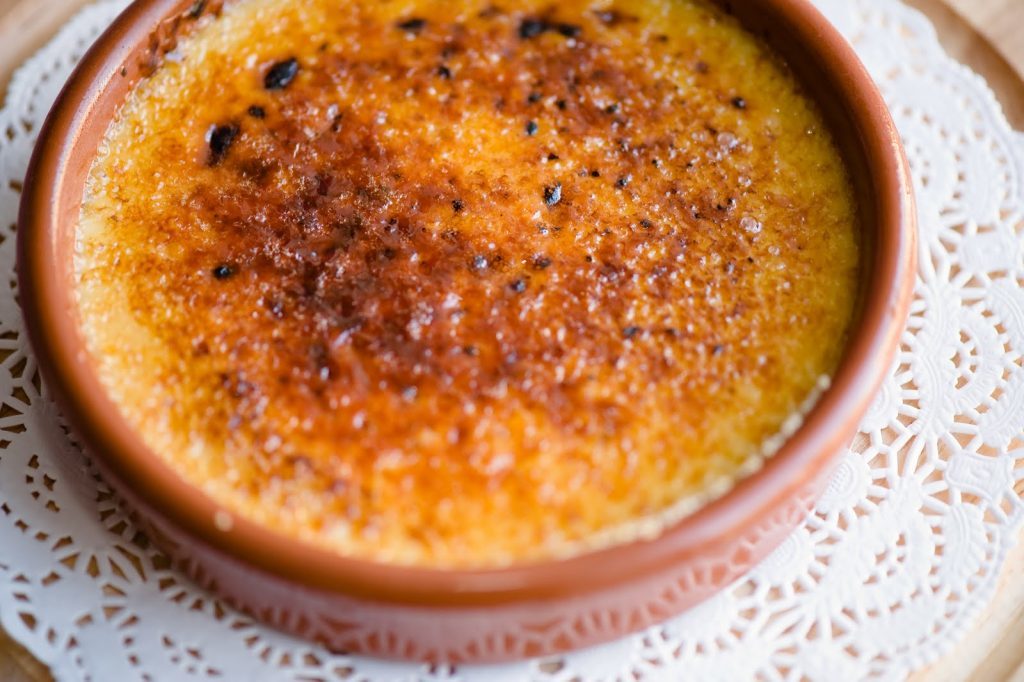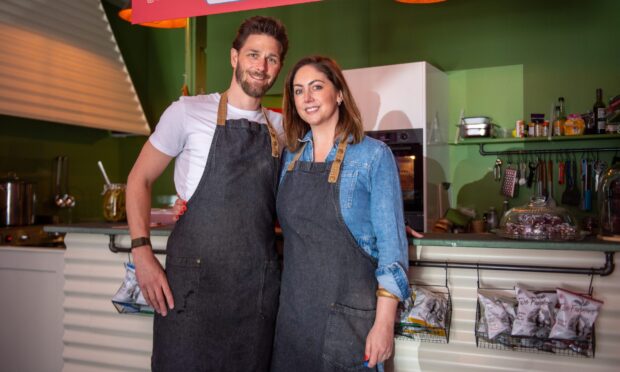While many young teenagers secretly dream of not having to go to school, for French chef patron Fred Berkmiller that dream became reality when he was just 13.
Deciding that a conventional route through school wasn’t for him, he went to St Maure de Touraine (a French town famed for its goat’s cheese) to start a kitchen apprenticeship. Two years later he began a second apprenticeship in Tours where he learned how to cook in earnest.
“It was hard work and long hours,” Fred recalls, “but I learned a lot about cooking, sourcing and seasonality, all of which have provided a foundation on which I’ve built my career.”
Chef jobs in Paris and Monaco saw him building up his experience and in 1989 he moved to London with just £20 in his pocket.
It was here he met his partner Betty and, after another 10 years consolidating his reputation as a top chef, the couple moved to Edinburgh with toddler Matilde and new baby Camille.
Since then Fred has been busy making a name for himself as one of Scotland’s top chefs. Opening two AA rosette awarded restaurants, l’escargot bleu and l’escargot blanc, and a wine bar in Edinburgh, he prides himself on classical French food like boeuf bourguignon and veal blanquette, all with a Scottish twist.
“Serving good, honest food with great provenance is hugely important to me, which is why I have built strong relationships with Scottish producers all over the country,” he says. “Sourcing snails from Barra, duck from Gartmorn Farm in Alloa, cockerels from Linda Dick in Peebles – that’s just a small selection of my Scottish suppliers.
“I ensure the best possible product is served to my customers.”
Although Fred set out on his culinary journey as a teenager it took a few years for him to realise that he had genuine talent and could make a career out of cooking.
“I probably realised I enjoyed it by the age of 21,” he admits. “It takes a few years to really become a chef and enjoy all aspects of cooking with a maturity and character in your own right.”
The ethos of both the l’escargot restaurants, a French twist using the best of Scotland, means Fred gets to keep his identity as a French chef while using the best ingredients from all over Scotland.
“It’s the best of both worlds and it’s nice to think I’m going a little way to keep the auld alliance going,” he smiles.
His cooking style is classic and traditional and, a passionate supporter of Scottish sustainability, he operates a nose to tail ethos in our cooking, ensuring no part of the animal goes to waste.
“This respect is also applied to our cooking style, which means our dishes are kept simple to let the organic flavours of the produce shine through,” he adds.
Choosing coq au vin a l’ancienne as his signature dish, he explains: “It takes a week from receiving the cockerel from our supplier to plating it up for our customers. Utmost care and attention combined with slow cooking, ensuring the best flavour – that’s my type of dish.”
But no matter the recipe, no dish is complete without a good stock.
“Stocks are my favourite ingredients. They are the unsung heroes of most dishes,” enthuses Fred. “A good chef is recognised by the sauce he makes, and for me, they are the most enjoyable things to create.”
Sourcing and cooking with Scottish produce, along with working with a great team, is a dream come true for Fred.
“The enthusiasm and optimism of the people I work with is incredible and makes each day fun and creative,” he smiles.
“I always advise young chefs to learn properly, step by step. Learn respect for the ingredients, and they will pay you back in flavour,” he continues.
“Put your gut, heart and feelings into it. What I am proudest of is thinking back to when I arrived in London with around £20 in my pocket, and realising what I have built up since then.
“It just shows that hard work, good ideas and a love for what you do go a long way.”
www.l’escargotbleu.co.uk
Pork and chicken liver paté
Serves 10
Ingredients
1 carrot
1 small onion
400g chicken liver
400g good quality pork shoulder
1 bunch of parsley
2 garlic cloves
2 sprigs of thyme
Armagnac/cognac/madeira to taste
150g cooked and diced hard pork fat
1 egg
20cl cream
400g crépinette or pig caul (a fatty netting available from a butcher)
Salt and pepper
Melted duck fat (for brushing)
Directions
Peel, wash and chop the carrot and onion into large chunks then place in a large bowl. Add the liver, pork shoulder, parsley, garlic, thyme and the alcohol, cover with cling film and marinate in the fridge overnight.
Boil the pork fat (starting with cold water) and cook for 20 minutes, cool down under cold running water then dice into 5mm cubes.
Take the meat mix out of the fridge and put everything (including vegetables but remove the thyme) through the mincer.
Add the diced pork fat, egg and cream, mix well, season and taste.
Soak the pig caul in cold water for an hour then rinse well. Line a terrine or a cast iron pot with the caul, going well over the side of the pot. Add the minced ingredients and press well until nicely shaped. Fold the caul over the terrine so that the top is well covered then remove any excess caul.
Brush the terrine with melted duck fat then place in the fridge to rest for a couple of hours before cooking.
After resting, place the terrine into a 3-5cm high baking tray and fill the tray with boiling water. Place in a preheated oven at 160C for two hours or until it reaches 66C.
Remove from the oven and rest until it reaches room temperature. Put in the fridge until serving.
Slow cooked lamb shanks with vegetables, thyme and rosemary
Serves 4
Ingredients
4 Scottish lamb shanks
100g plain flour
100g duck fat
1 carrot, peeled and diced
1 onion, peeled and diced
1 garlic clove, peeled and crushed
1l beef stock or chicken stock
1 bouquet garni
2 sprigs of thyme
2 sprigs of rosemary
Salt and pepper to season
Freshly chopped parsley
Your choice of vegetables to serve on the side
Directions
Dredge the lamb shanks in seasoned flour and fry in a large frying pan with the duck fat for 4-5 minutes making sure you’re turning them regularly until browned all over.
Add the diced carrots, onion, and crushed garlic and sweat them gently for a few minutes.
Get rid of any excess fat from the pan then pour in the stock. Bring to the boil and add the bouquet garni, sprigs of thyme and rosemary and simmer on a low heat for roughly two hours or until cooked and tender.
Take the shanks out of the pan and put to the side. Bring your stock to the boil and then pass it through a sieve pressing hard to extract all of the juices from the vegetables. Discard the pressed vegetables.
Cook your shanks in the sauce for another 45 minutes.
After 45 minutes take the shanks out to rest whilst you reduce your sauce.
Add seasoning and some more thyme. Once the sauce has reduced put the shanks back in and heat through gently.
Serve with a sprinkle of fresh parsley and with your chosen seasonal vegetables.
Vanilla crème brulée
Serves 4
Ingredients
125ml whipping cream
125ml double cream or crème fraiche
2 vanilla pods cut lengthways
6 egg yolks
65g caster sugar
4 tsps demerara sugar
Directions
Combine the creams in a pan and bring to the boil.
Scrape the seeds from the vanilla pods and add to the cream. Remove the pan from the heat and let it infuse for a few minutes.
Whisk the egg yolks with the caster sugar until thick and white.
Pour the cream into the egg mixture, whisking all the time.
Put the mixture back on the heat and cook for two minutes at a very low heat, stirring with a spatula at all times – make sure it doesn’t boil. Set aside.
Put four crème brulée dishes or ramekins into a deep ovenproof dish. Fill two thirds of the dish with hot water and place in a preheated oven at 100°C for 45 minutes or until set – don’t over cook or they will split.
When cooked, take them out to cool then place in the fridge until needed.
Before serving, sprinkle the brulées with demerara sugar and caramelise using a blowtorch or under a grill.
